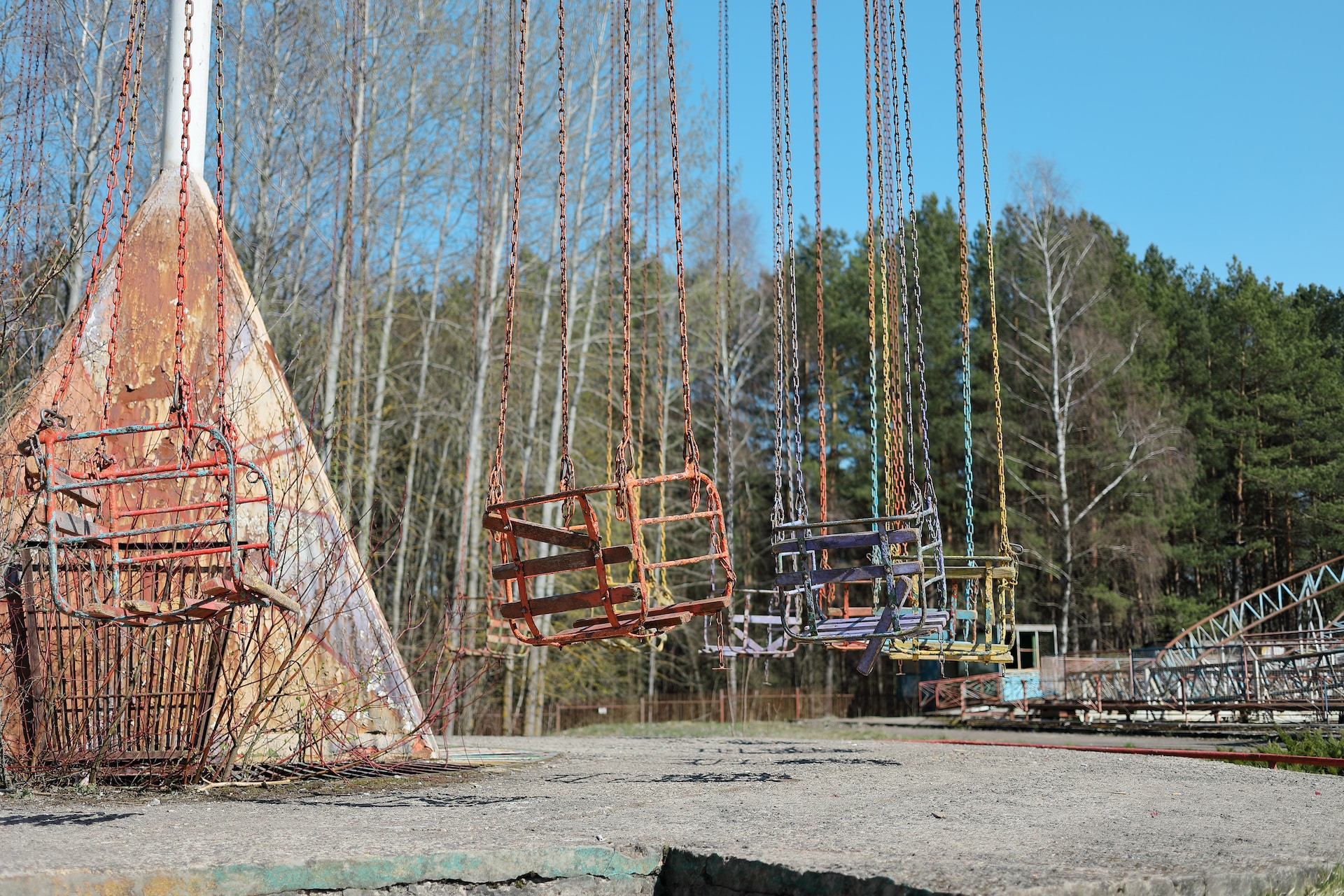Abandoned amusement parks in Europe are fascinating places where one can experience both thrills and explore often forgotten history. These places, once filled with laughing children and spinning carousels, now lie in ruins, but they continue to capture the imagination.
The Spreepark amusement park in Berlin, Germany
Spreepark in Berlin, Germany, is an iconic example of an abandoned amusement park in Europe. Opened in 1969, it had its glory days before closing its doors in 2002. Since then, the park has been abandoned and has become a favorite place for lovers of urban exploration. Ruined rides, dilapidated statues and overgrown buildings create an atmosphere that is both apocalyptic and captivating. For photography enthusiasts, it is a true paradise, offering endless possibilities for unique and mysterious shots.
Pripyat amusement park, Ukraine
The Pripyat Amusement Park in Ukraine is an even more poignant example of an abandoned park in Europe. Located near the Chernobyl nuclear power plant, it was closed after the 1986 nuclear disaster. The park’s colorful and cheerful attractions contrast with the desolate, radiation-contaminated landscape. The rides, now covered in moss and vegetation, create a surreal atmosphere. This park has become a symbol of the Chernobyl disaster and the devastating impact of humanity on the environment.
Wonderland amusement park in Chenzhuang, China
The Wonderland amusement park in Chenzhuang, China, is a striking example of an unfinished project. Initially designed as the largest theme park in Asia, it was to rival Disneyland. However, financial problems led to work stopping in 1998. Since then, the park has remained abandoned, leaving behind unfinished structures and half-built rides. These remains bear witness to the disproportionate ambition of the project and create a strange and unreal atmosphere.

Holy Land Amusement Park in Waterbury, United States
Although located in the United States, the Holy Land amusement park in Waterbury is worth mentioning in this list because it offers a unique experience in Europe. Built in 1955, the park was dedicated to the reconstitution of the Holy Land. However, it was closed in 1984 and is now in ruins. Biblical statues, giant crosses and abandoned religious buildings give this place an atmosphere that is both mystical and melancholy. It is a place of pilgrimage for lovers of urban exploration, offering captivating visual exploration.
The reasons why amusement parks close their doors
While amusement parks are designed to provide joy, laughter and unforgettable memories, many unfortunately end up closing their doors. The causes of these closures are multiple and diverse, and include both internal and external factors.
Financial factors at play
One of the main reasons for the closure of amusement parks is financial. The cost of operating such sites is considerable: ride maintenance, staff salaries, advertising, insurance and other expenses. When revenues fail to cover these costs, it can lead to a precarious financial situation for the park. Additionally, poor management or increased competition can also lead to financial problems.
The impact of natural disasters and accidents
Natural disasters, such as hurricanes, floods or fires, can cause considerable material damage in amusement parks. In some cases, the cost of rehabilitation is so high that it is not viable for the park to reopen. Furthermore, accidents, although rare, can also lead to a significant drop in attendance, or even the closure of the park if the incident has seriously damaged its reputation.
Socio-economic and cultural changes
Visitor tastes and preferences change over time. Once-popular attractions can become outdated, and if the park fails to innovate or adapt to new market demands, it can lead to declining attendance. Additionally, socio-economic factors such as recessions or financial crises can reduce consumers’ purchasing power, making them less likely to spend on family outings.
The location of the park
The geographic location of a park can also influence its success or failure. If a park is located in a remote or difficult-to-access area, this may deter potential visitors. Likewise, the closure of key infrastructure, such as nearby train stations or airports, can have a negative impact on attendance.
The influence of global trends on the popularity of amusement parks
As the world changes, new trends emerge, profoundly influencing how people spend their free time. Theme parks, as places of entertainment, are not spared from these fluctuations.
The digital age and the impact of social networks
With the advent of social media and sharing platforms like Instagram, TikTok and YouTube, people are increasingly looking for experiences that are “Instagrammable” or that lend themselves to being shared online. This has created pressure for theme parks to offer visually stunning or unique experiences. Parks that have been unable to adapt to this new reality have seen a decline in popularity as visitors opt for destinations that offer them greater value in shareable content.
The tourism of the abandoned
The growing interest in abandoned amusement parks is also a trend influenced by internet culture. Urban explorers share their expeditions to these forgotten places, capturing the melancholic beauty and poignant history of these places. Abandoned amusement parks in Europe, in particular, have seen an increase in visibility thanks to these digital explorers, making them sought-after destinations for adventure and history lovers.
Ecological awareness
With the rise of environmental concerns, many consumers have become more aware of the impact of their actions. Amusement parks, as immense consumers of energy and resources, have been scrutinized for their environmental impact. Those who have not taken steps to reduce their ecological footprint or promote sustainable practices have seen their reputation affected, with a possible drop in attendance as a result.
The evolution of family entertainment
With the evolution of technology and the emergence of new forms of entertainment such as video games and virtual realities, traditional amusement parks can sometimes seem outdated. To stay relevant, they must offer experiences that cannot be easily replicated at home. This may include technologically advanced attractions, live shows or immersive experiences.












